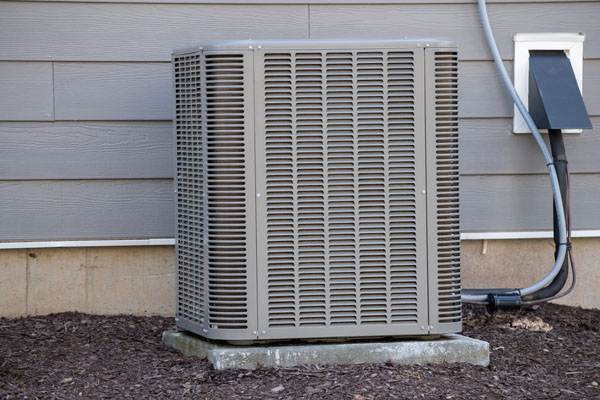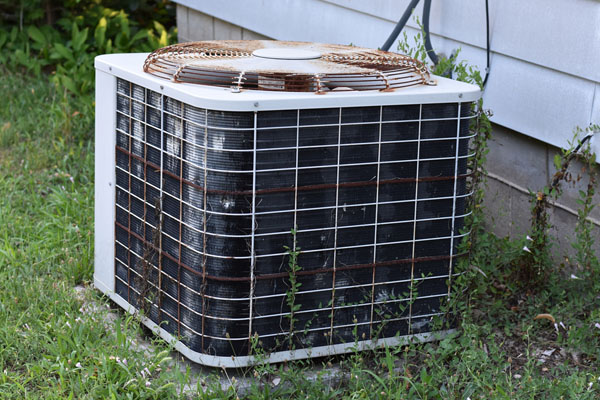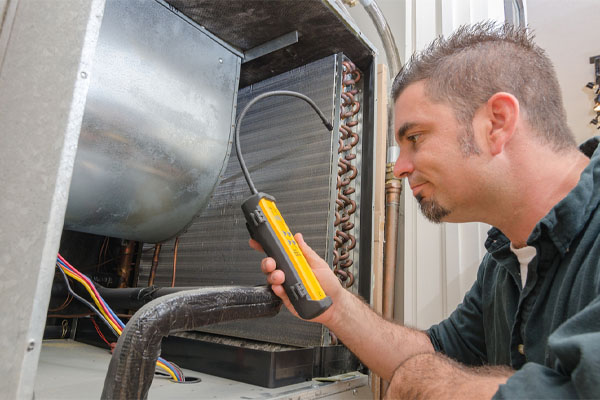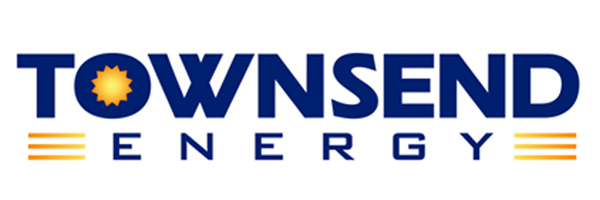AC Condenser vs. Evaporator Coil: Deciphering the Contrast

Air conditioning systems fundamentally operate by transferring heat. It’s a common misconception that these units work by generating cool air directly. Their main function is to eliminate heat from indoor spaces, releasing it outside. This process of heat exchange, facilitated through several cycles, slowly lowers the indoor temperature, enhancing comfort levels.
Key components in this operation are the condenser coils and evaporator coils. While they might look alike, their roles are distinct and crucial in achieving effective cooling. Continue reading to explore the unique functions and differences of the condenser vs evaporator coil.
Exploring the Difference Between AC Condenser Vs Evaporator Coil
Contents
Central air conditioning systems are divided into two main components: the indoor and outdoor units, seamlessly connected by a network of tubes. These tubes carry a special substance known as refrigerant, renowned for its high heat absorption properties and ability to shift between gas and liquid states under varying pressures.
When the air conditioner is activated, this refrigerant circulates between the indoor and outdoor units, creating a continuous flow. Let’s delve into where the condenser vs evaporator coil fits within the broader framework of the air conditioning system.
For expert insights into the differences between AC condensers and evaporator coils, contact Townsend Energy today!
The AC’s Evaporator Coil
The evaporator coil is situated in the indoor unit of the air conditioner. It is a network of copper tubes that carry exceptionally cold refrigerant. This coil is in continuous contact with the warm air inside the room, pulled in by the system’s blower.
The refrigerant inside these tubes absorbs the heat from the air while the water vapor condenses around the cold coils, effectively decreasing humidity. Consequently, the air, now significantly cooler and less humid, is redistributed indoors by the blower for a more comfortable living environment.
The refrigerant embarks on the next phase of its journey. It exits the evaporator coil slightly warmer and travels through an insulated conduit toward the outdoor unit.
This outdoor unit is a large cabinet housing two vital components: the compressor and the condenser coils. Upon entering the compressor, the refrigerant is pressurized, which elevates its temperature further. This superheated state of the refrigerant is key for efficient heat transfer to the outdoor air.
The Condenser Coil in the Air Conditioning System
Upon examining the condenser coil alongside the evaporator coil, one can observe their similar design and construction materials. Despite this resemblance, their functions are opposed. The evaporator coil absorbs heat, whereas the condenser coil’s role is to release it.
This heat absorption and release process cycles repeatedly until the air temperature aligns with the thermostat settings. During this operation, you may notice a subtle humming sound from the compressor and fans working in the background.
The hot refrigerant vapor in the outdoor unit rapidly sheds heat to the environment, cooling and reverting to a liquid. An outdoor fan aids this by directing air through the condenser coil. The now-liquid refrigerant heads back to the indoor unit, passing through an expansion valve.
This valve converts it back into a vapor while also cooling it, preparing it for efficient heat absorption in the next cycle.
Coil Maintenance in Air Conditioning Systems
Effective upkeep of evaporator and condenser coils is crucial for air conditioning efficiency. A simple yet effective approach is scheduling an annual tune-up with a qualified HVAC contractor. This service extends beyond coil maintenance, thoroughly inspecting all system components followed by a detailed maintenance checklist, ensuring optimal energy efficiency and prolonging the system’s lifespan.
Maximize your AC system’s efficiency with Townsend Energy’s comprehensive HVAC services – call us now for maintenance, repairs, and more.
Common Issues with Air Conditioner Coils
Air conditioner coils, including the condenser vs evaporator coil, can experience several common problems, such as:
Corrosion

Typically made from copper and aluminum, evaporator coils don’t rust like steel but are susceptible to corrosion and pitting over time. This can result in holes and cracks that are not always visible but have significant effects, such as refrigerant leaks.
These leaks reduce the system’s ability to absorb heat effectively and risk releasing harmful chemicals into the home. HVAC technicians can find and repair these leaks, reseal the system, and replenish it with fresh refrigerant.
Dirt Buildup
Dust and dirt infiltration can accumulate on the coils, creating an insulating layer that significantly hampers heat transfer efficiency. This insulation impedes the coils’ ability to absorb heat and release functions effectively.
As a result, the system’s fans may need to operate for extended periods to achieve the set temperature, causing increased wear and tear on the components and higher energy consumption. This elevates energy costs and also shortens the system’s lifespan. Regular maintenance is vital in preventing this issue.
Mold Growth

The AC’s indoor units offer dark and damp conditions, lacking sunlight, which naturally combats fungi and bacteria. This is ideal for mildew and mold growth, which can flourish within the system and spread spores throughout the house via the ducts. Such growth deteriorates indoor air quality and poses health risks to the occupants. Additionally, mold can obstruct airflow through the evaporator coil’s fins.
Debris Accumulation
Debris infiltration is a common issue for outdoor air conditioner units. Materials such as dry leaves, twigs, and other waste can quickly enter the system. If this debris accumulates at the bottom, it can obstruct airflow to the condenser coil, impeding the efficient release of heat from the refrigerant to the environment. Maintaining a clear area around the unit free from vegetation and conducting periodic cleaning are good preventative measures.
Issues with Air Conditioner Refrigerant

A common problem in air conditioning systems is inadequate cooling, often attributed to low refrigerant levels. If your air conditioner was functioning well before but is now underperforming, it’s possible that the refrigerant, vital for heat absorption and expulsion, is insufficient.
Low refrigerant levels can leave the home uncomfortably warm, especially during summer. Additionally, this issue can lead to more severe problems like frozen coils and even complete system shutdowns. In such cases, seek assistance from a professional HVAC technician.
Take the first step towards a more efficient and reliable cooling system – contact Townsend Energy for expert guidance and exceptional service.
Conclusion
Air conditioners are adeptly designed to transfer heat, maintaining coolness in your home. This system utilizes a refrigerant that circulates through two critical coils: the evaporator coil, which absorbs indoor heat, and the condenser coil, which releases heat outside. Their synchronized function is crucial to effective cooling.
Make sure you arrange for annual professional maintenance to preserve your AC unit’s efficiency and tackle common coil problems.
Contact Townsend Energy For Comprehensive HVAC Services
Townsend Energy specializes in superior heating and cooling services across Northeastern Massachusetts, Southern Maine, and Southern New Hampshire. Our reliable team of professionally certified technicians is adept in providing thorough HVAC tune-ups, repairs, installations, and replacements, ensuring high-quality service for your system.
We pride ourselves on offering the most competitive prices for heating and cooling services in the area. Our maintenance services are designed to enhance your comfort, boost your system’s energy efficiency, and reduce home heating and cooling expenses. Should you require HVAC repair or a replacement system, Townsend Energy can recommend the optimal solution for your home, tailored to fit your budget. We stand behind our work with a solid satisfaction guarantee.
To schedule a service appointment or a free in-home estimate, contact Townsend Energy today. We’re committed to addressing all your HVAC needs with excellence and efficiency.
Contact us now at (800) 722-4101 to find out more! Click the link to view our service area.

Related Articles:
